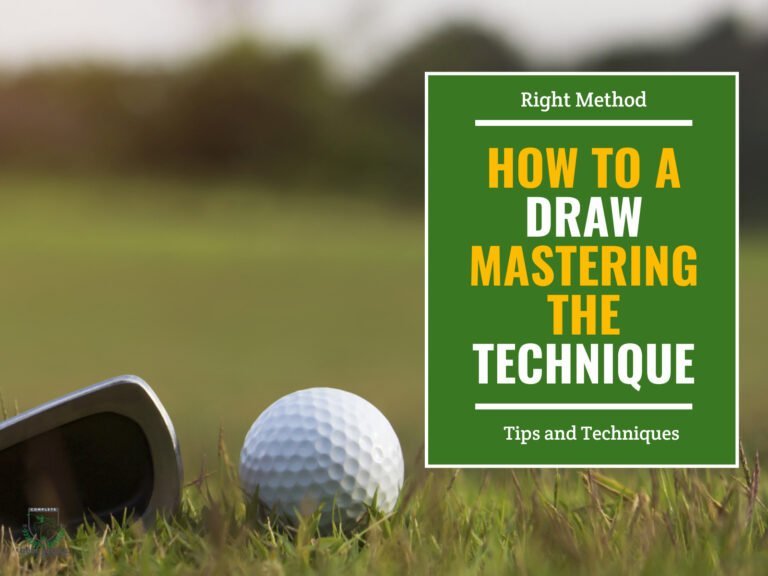A draw is one of the most desired shots in golf. Many golfers aspire to hit a consistent draw to add extra distance and precision to their game.
A draw shot is when the ball gently curves from right to left (for a right-handed golfer) and is a desirable shot to have in your arsenal. However, hitting a consistent draw shot can be challenging for many golfers.
The good news is that with the right technique and some practice, it is achievable. In this article, I will provide you with tips and techniques to help you hit a successful draw shot in golf.
What Is A Draw In Golf?
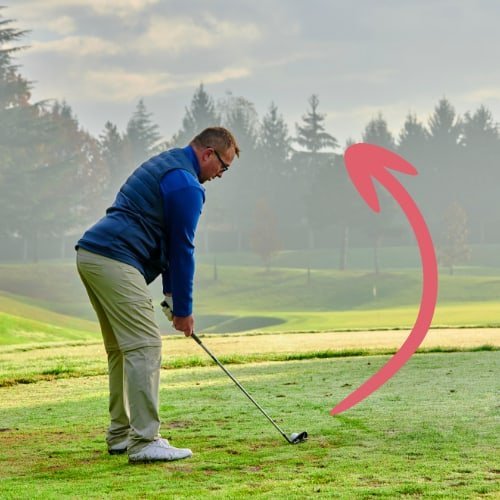
A draw in golf refers to a controlled shot that gently curves from right to left (for right-handed golfers) or left to right (for left-handed golfers) in the air. Unlike a slice (which curves severely to the right for right-handed golfers) or a hook (which curves severely to the left), a draw is an intentional shot that can be beneficial for players of all skill levels.
Producing a draw shot requires a golfer to use a closed clubface and an inside-out swing path. When done correctly, this swing path enables the golfer to make contact with the ball slightly before it reaches the bottom of the swing, resulting in a draw ball flight that travels farther than a straight shot.
One of the main advantages of producing a draw is extra distance – the draw shot can travel several yards farther than a straight shot when executed correctly. Additionally, a draw can be extremely useful when playing shots into greens or around obstacles, as it allows the player to control the curve of the ball and land it near the intended target.
Overall, while it’s important for golfers to be able to hit a variety of shots, mastering the draw shot can give players a significant edge on the course.
How To Achieve Draw Ball Flight?
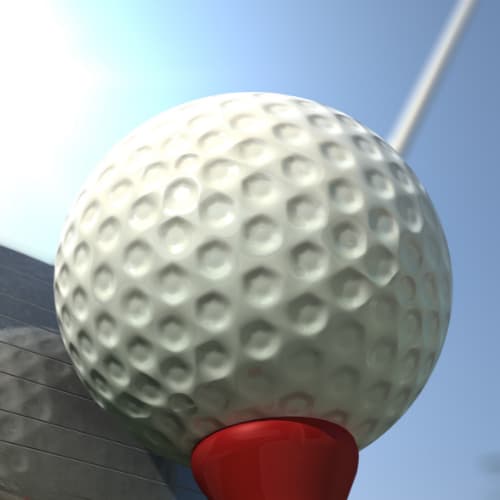
To many golfers, a consistent draw shot is one of the best ball flights to achieve. It provides extra distance and has a gentle curve toward the intended target.
However, not everyone may find it easy to hit a draw consistently. Let’s discuss the steps on how to hit a draw in golf by breaking them down into several key concepts.
Step 1 – Aim To The Right Of Your Target Line
It is important to aim right of the intended target. This can be achieved by using alignment rods or a club.
Firstly, set up two rods on the ground, with the first pointing along the starting line to the right of the target and the second meeting the first at a diagonal angle and facing towards the intended target.
Next, align your feet with the first rod and the clubface with the second stick. If alignment rods are not available, a club can be used. Place the ball a few inches behind the intersecting point of the rods and get ready for the next step.
Step 2 – Position Your Golf Ball Slightly to the back

Positioning the golf ball back in your stance can significantly help in executing an inside-out golf swing and inducing draw ball flight.
Start by taking your normal starting position and placing the ball slightly back of center. This adjustment will promote an in-to-out path and induce a draw shape if you are a right-handed player, with the ball starting right of the target.
Standing marginally back from the ball may additionally help produce an inside-out swing path.
To ensure a consistent draw shot, remember to keep the clubface closed at impact and visualize hitting the ball at “1 o’clock” on a clock in front of you.
Step 3 – Align The Club Face With The Target
Now align your clubface with your intended target. Many golfers make the mistake of closing the clubface excessively, which can lead to unwanted side spin and a duck hook. It’s important to position your clubface to point towards your target or the middle of the fairway before setting up for your shot.
To add some draw spin, set up to the right of your intended landing area with a clubface that is closed relative to your path. Also, make sure that your club remains open to the fairway or pin throughout the swing. This setup will help you generate marginally closed clubface at impact, producing the desirable side spin necessary for a perfect draw.
Remember, clubface positioning through impact is the most crucial factor in producing a draw shot. Make sure to avoid excessive clubface closing, which can cause the ball to hook. With proper alignment and clubface position, hitting a draw can add distance and accuracy to your shots, making you a more confident golfer.
Step 4 – Take An Inside-out Swing Path On Your Backswing
It’s also important to have an inside-out golf swing path. One way to achieve this is by taking your club inside on the backswing.
To begin, take your club straight back from the ball in a straight line. However, once you reach waist height, begin rotating your forearms and wrists so that the club head is behind your hands during the backswing.
This position will set you up for an inside-out golf swing path, which is essential for hitting a draw. Keep in mind that this technique doesn’t guarantee hitting a draw but encourages your hands, body, and clubface to fall into the desired position through the golf swing.
Step 5 – Follow An Outside Club Path To Impact
Another essential thing is to send the clubhead along an outside path on the downswing. This allows the clubface to strike the ball closed to the swing path and generate right to left sidespin. Following an outside club path will help you achieve this.
To optimize hip rotation, you should rotate sufficiently on the downswing but not too early, which may cause an open clubface. It’s important to position the clubface correctly through impact, and it should strike the ball with a marginally closed face to generate the desired side spin and draw shape. The club must stay open to the fairway or pin with a closed clubface relative to your path.
How Do You Hit A Draw With Your Driver?
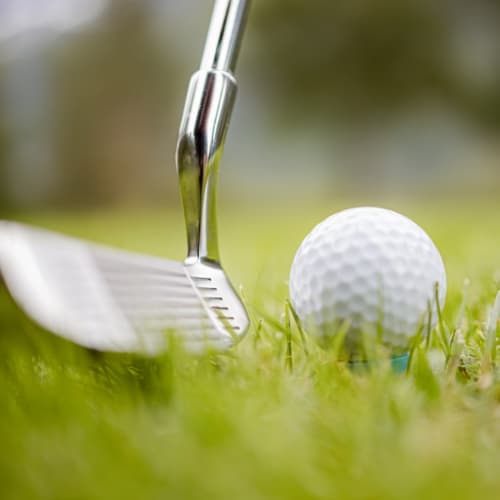
Hitting a draw shot with your driver requires a few different techniques than hitting one with an iron. Here’s how to do it:
Clubface Control
Controlling the clubface is essential if you want to produce a draw ball flight. To achieve this, you should use a strong grip without overdoing it, which means positioning your left-hand grip slightly to the right of the center of the grip, and your right palm positioned opposite your left thumb. This grip will allow you to make vital adjustments to where your clubface is pointing.
Square Clubface Backswing
Keeping the clubface square on the backswing is necessary to create an inside-out swing path. It’s essential not to twist your hands too much here and always keep them directly attached to the clubface. You’ll need to use your hips to make enough space for an aggressive turn into the ball.
Swinging Inside-Out
Swinging inside-out refers to the club path where the clubhead approaches the ball from the inside and then continues in an outward direction. You’ll need to use an aggressive follow-through by keeping your arms and body in sync during the swing-the arms lead your torso.
Draw Ball Flight
The most vital part of hitting a draw is producing a draw ball flight that starts right of your intended target, and gently curves to the left in line with your target before landing. Your hips play a vital role in the swing, and you should ensure that they create enough space for an aggressive turn into the ball, which is the key to producing a draw flight.
How Do You Hit A Draw With Your Irons?
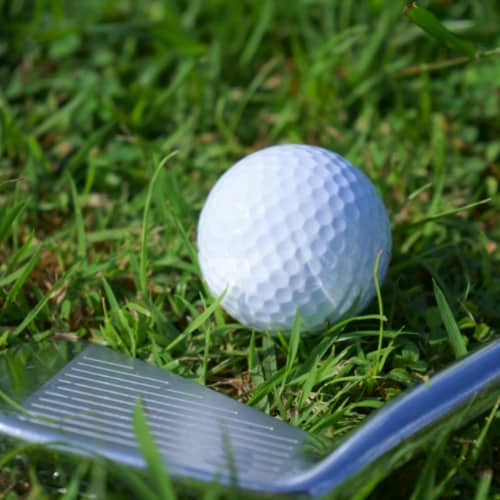
Hitting a draw with your irons can be challenging, but it’s achievable with a few adjustments in your stance and swing mechanics. Here’s how you can hit a draw with your irons:
Shift the ball position slightly back in your stance, closer to your right foot if you’re right-handed. This adjustment will encourage an inside-to-out swing path, which is crucial for creating draw spin.
Align your feet, hips, and shoulders to the right of the target to promote an inside-out swing path.
The key to hitting a draw is keeping the swing path inside-out throughout the downswing, which will create an anti-clockwise spin on the ball, causing it to draw. Ensure that you rotate your body instead of using your arms and hands to manipulate the club.
One common mistake golfers make when trying to hit a draw is flipping their hands during impact. This mistake leads to a hook shot. Avoid this by maintaining balance throughout the swing and keeping your hands slightly forward in the impact position.
Remember to make adjustments to your ball position and alignment, and keep your swing path inside-out with a proper rotation of the body.
Golf Drills To Help You Hit A Draw Shot
Here are a few exercises and drills to help you practice and build muscle memory to achieve a draw more consistently.
1. Alignment

Again, alignment is a crucial factor when it comes to accurately hitting a draw shot in golf. It refers to the correct positioning of the player’s body and clubface in relation to the intended target. Proper alignment can encourage an outside downswing path and prompt the required spin for an intended draw.
Using Alignment Sticks
Many golfers find it helpful to use alignment sticks to achieve proper alignment. These tools resemble two thin rods that rest on the ground and aid golfers in aligning their bodies and clubface correctly.
Steps for Using Alignment Sticks
Start by placing two sticks on the ground. The first stick should be placed along the starting line, right of the target. The second stick should be placed at a diagonal angle, meeting the first stick and facing toward the target.
Once the sticks are in place, golfers must align their feet with the first rod, ensuring that their toes, knees, and hips are all pointing along the same line. Next, the clubface must be aligned with the second stick, ensuring that the face is square to the target line.
2. 10 O’Clock, 4 O’Clock
One effective way to consistently hit a draw in golf is through the 10 O’Clock, 4 O’Clock drill. The purpose of this drill is to optimize a golfer’s club path to achieve more consistency in draw shots.
Watch the below video from US Golf TV where Sam Vosler demonstrates this technique:
To do this, think of your body as a clock, with your head at 12 and feet at 6. The golf ball is at 4, and the goal is to take the club back to 10 and through to 4 while activating right-to-left spin.
Repeat this exercise to get used to the in-to-out swinging path. The shot may be weak at first, but consistent practice will produce better results over time.
By optimizing the club path through the 10 O’Clock, 4 O’Clock drill, golfers can achieve a more consistent draw.
3. Inside The Stick
This approach helps the golfer focus on the takeaway and swing path to build a repeatable and consistent draw shot.
To start, lie a rod parallel to the target line and position the golf ball two inches ahead of the stick. Ensure that the ball is appropriately aligned, and the clubface is square to the target.
Next, stick another rod behind the first stick and angle it parallel to the shaft. The second stick should prompt an inwards takeaway to encourage an inside-to-out swing path.
The key to this drill is to keep the clubhead from touching the stick while taking the club inside on the backswing. If the club touches the rod, it means that the swing’s path is too much outwards or straight back.
To achieve a draw shot, the golfer must ensure that the club moves inside on the backswing. By keeping the clubhead from touching the rod, the golfer can obtain an optimal swing path that produces a perfect draw ball flight.
4. Around The Stick
This simple but effective drill requires an alignment stick placed three yards in front of your ball and in line with your target.
For right-handed players, aim to start the ball on the right side of the stick and draw it back to your target. Left-handers should aim to start the ball on the left but curve it right to the target.
This drill combines your alignment and swing path training to produce your desired launch and ball flight. By focusing on hitting the ball around the stick, you’ll learn to control and manipulate your club face angle to create a draw shape.
With practice, this drill can help you develop a consistent inside-out swing path and a closed clubface at impact, producing a draw ball flight. Use this drill with different clubs, including your iron clubs and adjustable drivers, to add extra distance and power to your draws.
More Tips to Hit Draws
The following are some things to take into consideration while working on your draw shots; these will greatly help achieve your goal.
1. Check Your Equipment
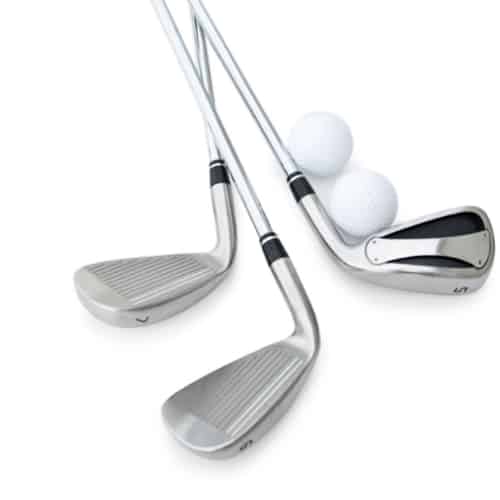
To hit a consistent draw shot in golf, it’s essential first to check and adjust your equipment. Here are a few tips to get started:
1. Make sure your clubs, particularly your drivers, fairway woods, and hybrids, have a neutral or draw setting. You can also add draw bias by placing weight in the heel area of the club head.
2. Investing in quality adjustable drivers, woods, and hybrids from brands like Callaway, TaylorMade, Cobra, and Bridgestone can also make it easier to hit a draw shot.
Consider widening your stance by dropping your right foot back 1-2 inches and leading with your hips to minimize forearm rotation through impact.
2. Pick Your Target First
It’s important to choose a target that aligns with the club and the intended ball flight, which can help induce a draw.
To achieve this, the clubface must be slightly closed at impact, and picking a target based on the club can help achieve this. Before starting any practice swings, it’s important to fully commit to the target and visualize the intended ball flight. This can help prime the mind for success and promote a more consistent and accurate shot.
For right-handed golfers, aiming right of the target line can help create a draw, while left-handed golfers should aim left of the target line.
3. Tee Up on the Left Side of the Tee Box
Teeing up on the left side of the tee box is a crucial strategy when trying to hit a draw in golf. Many golfers assume the opposite and place the ball on the right side of the tee box when hitting a right-to-left shot.
However, aiming to the left provides you with more room and a better angle to hit the ball to the right, allowing it to turn back left. This strategy also helps you avoid trouble if you miss your shot.
By doing so, you will provide yourself with room to aim your shot, resulting in a better chance of hitting the perfect draw. Always be aware of where you can miss a shot without ending up in trouble.
Hitting a draw requires precision and planning, and proper tee box strategy is a crucial part of achieving consistent results.
4. Practice on the Range First

Practice on the range allows you to work on different aspects of your swing, such as square clubface, closed club and an inside-out swing path. Here are some tips on how to hit draw shots during practice on the range:
- Set targets– Take aim at a spot on the range and try to hit a consistent draw shot towards it. Vary the distance of your targets and try to pick different trajectories for your shots.
- Use different clubs– Experiment with different clubs to see which one works best for you. Start with lofted irons and progress to smaller numbered ones. You can also try drawing with your driver to get extra distance.
- Align your feet– Use alignment rods to line up the direction of your feet and the start line. This will help you set up correctly and get a better feel for aiming right.
- Practice big hook shots– Overdo it by trying to hit big hook shots. This will help you get a feel for what’s needed on your backswing and setup position when hitting draw shots.
- Take short breaks– After successfully hitting a few draw shots, take short breaks to recalibrate your mind and body before trying again. This will help you stay focused and motivated.
- Loosen your grip– If you have trouble releasing the club, try loosening your grip. This will help you release the club naturally and hit a smoother draw shot.
- Picture clubface at impact– Mentally picture the toe and heel of the club during impact to help you set up correctly and hit a consistent draw shot every time.
By practicing on the range regularly and incorporating these tips into your routine, you can master the draw shot in golf and improve your game.
5. Focus On A Single Swing Thought
It may seem counterintuitive to simplify your swing thought, but overthinking can cause paralysis by analysis. Instead of overwhelming yourself with multiple swing thoughts, find a broad and simple swing thought that works for you like “think draw” or “keep a good tempo.” This allows you to focus on the shot and execute it with confidence.
It’s important to avoid overwhelming yourself with too many swing thoughts, as this can lead to inconsistent shots. Instead, find a single swing thought and stick to it. This allows for a more consistent and smoother swing.
If you’re struggling with hitting a draw shot and consistently seeing a push or block miss, don’t worry. There are ways to fix this issue. One way is to ensure that you’re focusing on a broad swing thought. Additionally, adjusting the clubface square and using an inside-out swing path can also assist in hitting the draw shot successfully.
By having a single swing thought, you can simplify the process of hitting a draw shot and achieve more consistent results. So, find a swing thought that works for you, avoid overthinking, and focus on executing the shot with confidence.
Final Thoughts
Mastering the draw shot in golf can significantly benefit your game. It is a powerful weapon for escaping trouble and attacking the course.
By mastering the clubface positions and an inside-out swing path, you can generate the sidespin needed for a draw shape. This shot can be particularly helpful for mid and low-handicappers looking to level up their game.
If you’re looking to work on hitting a draw, using alignment sticks can be an effective aid to help you achieve this shape.
In addition to the draw shot, mastering a variety of different shots can help enhance your performance on the golf course. For instance, understanding how to hit a flop shot can be invaluable when you find yourself in a tight spot and need to get the ball high into the air with minimal forward movement.
Don’t be discouraged if it takes a bit of time to achieve the perfect draw; it’s a skill that many professional golfers take years to master. With consistent practice using proper drills, you can add extra distance to your shots and achieve the perfect draw in no time.


